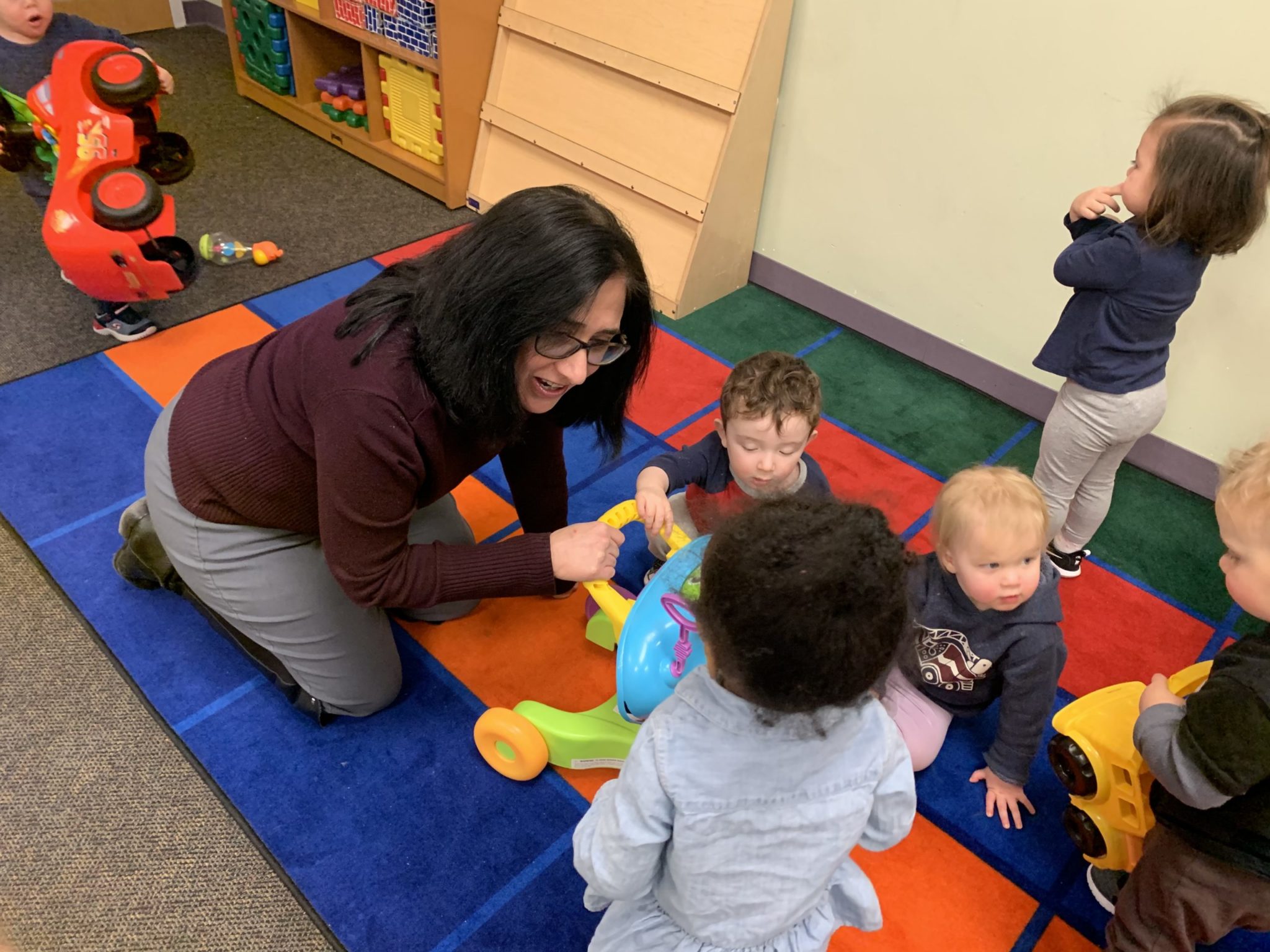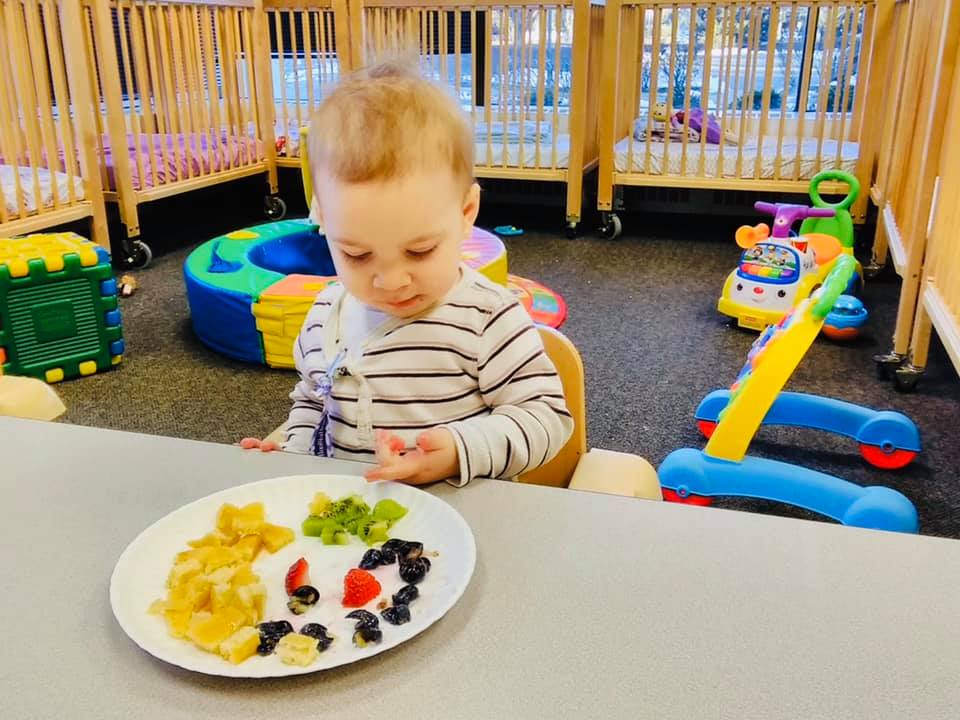Quality daycare learning activities set a lifelong foundation for well-being and success.
We often hear or see in the media that children are not getting enough physical activity these days. Some spend most of their time playing computer games and watching YouTube videos instead of enjoying the beautiful weather outside. But what does being “physically active” mean for infants, toddlers and preschoolers?
[button text=”Book a Free Tour” color=”alert” style=”shade” size=”larger” radius=”10″ depth=”4″ depth_hover=”5″ expand=”0″ link=”https://inquiry.discoveryvillagecenter.com/landing-ld-gen-ppc-tarrytown-v1?utm_medium=PPC&utm_source=outbrain&utm_campaign=signups&utm_content=—-kw-learningactivitiesblog-pos-tp-lt-btn-msg–img-carousel-cta-signup” class=”tour”]
Daycare learning activities nurture children’s development.
For young children, physical activity does not mean lifting weights in the gym and running for 15 minutes on the treadmill. It is about active play and having the opportunity to move and explore their environment. A child’s physical activity will vary depending on their age and development. For instance, infants can move around through supervised, floor-based play during the day. Tummy time can also help them strengthen their muscles needed to crawl and walk. While toddlers still need supervision they are able to walk or even run as you chase them around your home.
Aside from physical activities, it is also essential to develop children’s cognitive and social skills. Quality daycare learning activities powerfully support that development. If you are a parent who is about to enter the workforce and wants their child to learn and grow while you are away, it is time to consider enrolling your little one in a daycare center – and there is no need to feel guilty about it. Daycare does not only give parents the time they need to provide for the family; it also allows children to hone their creative juices and social skills. That is why parents and early childhood educators must choose the right activities, so that young children can develop to their full potential.
5 Simple Kids’ Activities to Try at Home
You can only let your child run through the grass and sprinklers so many times before they get bored. During early childhood, kids are willing to try new activities. If you’re looking for new exercise for your child to enjoy, let them explore the world around with these hands-on activities designed to engage and excite your little learner.
Painting with Bubbles
Your kids will have a blast combining colors, blowing bubbles and making imaginative prints with this bubble painting activity. To begin, you will need small plastic containers, non-toxic tempera paint in different colors, liquid dish soap, water, plastic straws and a piece of paper. Mix your paint with a little water, stir in a squirt of dish soap, then put the straw into the mixture and blow to create lots of bubbles. Gently press the paper over the bubbles and watch how it will leave swirly patterns and splatters on the paper.
Doing this activity will not only bring out the creative side of your child; they also get to explore the properties of bubbles and build oral motor strength through controlled blowing.
Sink or Float Experiment
The sink or float experiment is a play-based learning activity that will encourage kids to observe and predict whether the object floats or sinks. Start by grabbing several objects with varying weights and materials as well as a large container to fill with water. Let your child drop the objects one at a time and guess if they will float or sink. This experiment is a fun way to explain density to children.
Musical Activities
Like all early learning experiences, musical activities promote development in many domains. Imagine six toddlers banging on different musical instruments; it is a team effort that can nurture cooperation and build positive peer relationships. Not only will they learn rhythm, they will be encouraged to share and take turns. Passing instruments will get them to feel the beat as their rattles go “chicka chicka,” and their little drums go “boom chicka boom.”
Learn about Recycling
As parents and educators, it is essential to teach children the importance of taking care of the earth. You can set up a recycling center where children can learn how to reduce, reuse and recycle. It will provide an opportunity for them to learn where the products came from and how they can reuse them. If you are a teacher, you can invite the kids to bring in some disposable household materials to combine with items in the classroom and transform them into creative art projects.
Dressing Up Role Play
Every child needs an engaging and fun way to learn. Role-playing activities will deliver just that. It is an activity where kids use their imaginations, gain confidence, build vocabulary skills and develop ideas about how the world works. With dress-up play, your child can be anyone – from a superhero to a doctor, a fashion model to a policeman, even a princess or a frog!
These activities will keep your little ones entertained, especially if you have a budding Picasso on your hands or the next Albert Einstein. Don’t let your child miss out on the fun! Choose a daycare center that combines different fun activities with an educational twist that will benefit them in the long run; choose Discovery Village Center! If you have questions, visit our website and don’t hesitate to call us at (914) 631- 1009!
[button text=”Book a Free Tour” color=”alert” style=”shade” size=”larger” radius=”10″ depth=”4″ depth_hover=”5″ expand=”0″ link=”https://inquiry.discoveryvillagecenter.com/landing-ld-gen-ppc-tarrytown-v1?utm_medium=PPC&utm_source=outbrain&utm_campaign=signups&utm_content=—-kw-learningactivitiesblog-pos-bt-lt-btn-msg–img-carousel-cta-signup” class=”tour”]


